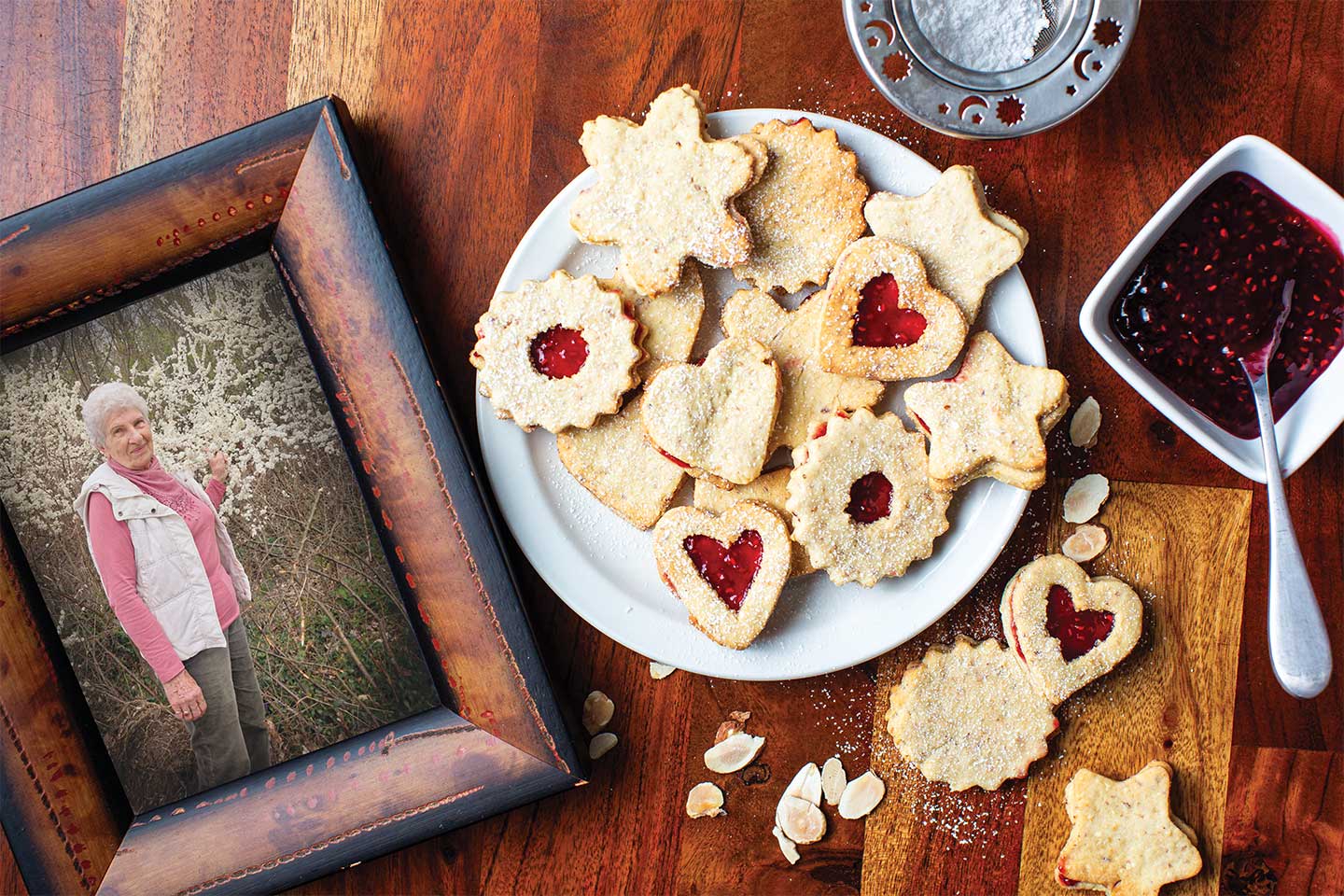
8 minute read
Heirloom Eats
Heirloom Eats
heir·loom (noun): a valuable object that has belonged to a family for several generations
From furniture and faith to collectibles and character traits, there are a lot of things that get passed down over the course of a family’s history, and recipes are no exception. But a recipe nurtured by generations of love and care is so much more than the food it creates. It’s also a reminder of the laughter and light that can happen when a family comes together.
Photography by Rich Smith
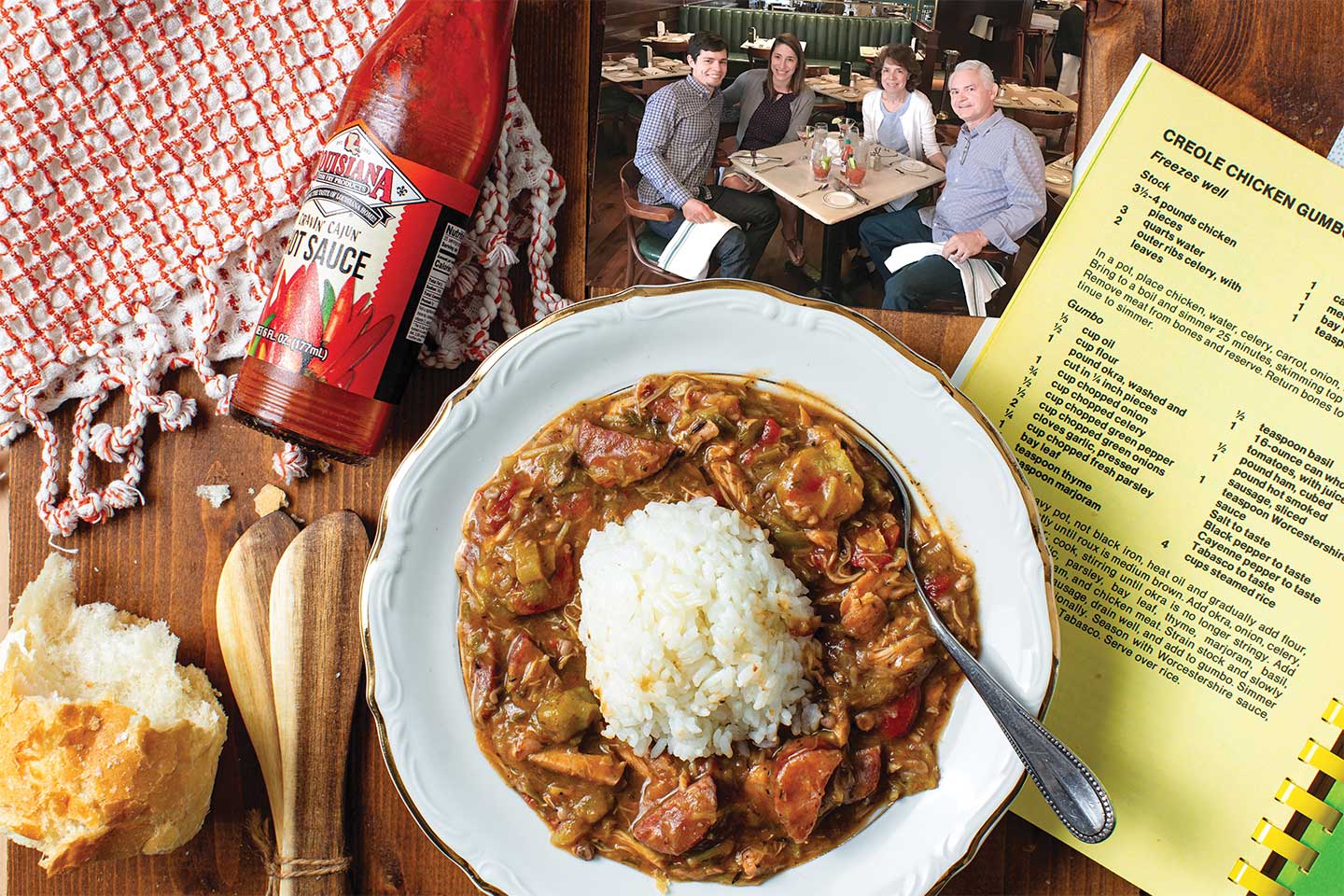
Creole Chicken and Sausage Gumbo
Yields 10 servings
Ingredients
32 oz. cut okra
2-3 lbs. boneless chicken breasts or thighs
Drizzle of olive oil
1½ tsp. kosher salt + extra, to season chicken
½ tsp. black pepper + extra, to season chicken
½ tsp. Tony Chachere’s Original Creole Seasoning + extra, to season chicken
1 lb. andouille or hot smoked sausage, diced or sliced
1 cup green bell pepper, diced
1 cup onion, diced
1 cup celery, diced
⅓ cup vegetable oil
½ cup all-purpose flour
4 cloves garlic, minced
1 (28 oz.) can diced tomatoes with juice
1 cup green onions, thinly chopped
¼ cup fresh parsley, chopped
1 tsp. dried thyme
½ tsp. marjoram
½ tsp. dried basil
2 dried bay leaves
3 qts. chicken stock or broth
4 cups white rice, cooked
Tabasco sauce, for garnish
Directions
Begin by preheating the oven to 350°. Spread okra on a baking sheet and place in oven. While the okra is baking, place chicken on a baking sheet and drizzle with olive oil and sprinkle with salt, pepper, and Tony’s seasoning. Place in the oven to bake alongside okra while the remaining ingredients are prepared.
Once the okra and chicken are in the oven, dice up andouille sausage and drop in a large pot over medium heat. While it cooks, dice up the vegetables. Once andouille is cooked, remove from pot. To make the roux, heat vegetable oil over medium-low heat in the pot and then add flour. Stir or whisk until the clumps of flour are broken up. Scrape the sausage bits off the bottom of the pot as well. Cook until the roux darkens to the color of peanut butter.
Then, remove okra and chicken from the oven. Add the baked okra to the pot and set the chicken aside. Stir okra into the roux and then add green bell pepper, onion, and celery. Stir and let cook for about 5 minutes. When the onions start to soften, add garlic, tomatoes, and green onions, followed by seasonings. Cook for 1-2 minutes. Dice or shred the cooked chicken and then add to the pot. Add andouille and cook for a few more minutes, stirring occasionally. Now, add chicken stock and bring to a boil. Once boiling, reduce to a simmer and cook uncovered on low heat for at least 1 hour. I recommend 2-3 hours – the longer you cook the gumbo, the better it will be. Stir as needed to prevent the gumbo from sticking to the bottom.
When ready to serve, spoon the gumbo into bowls with a scoop of white rice. Garnish with a few dashes of Tabasco sauce.
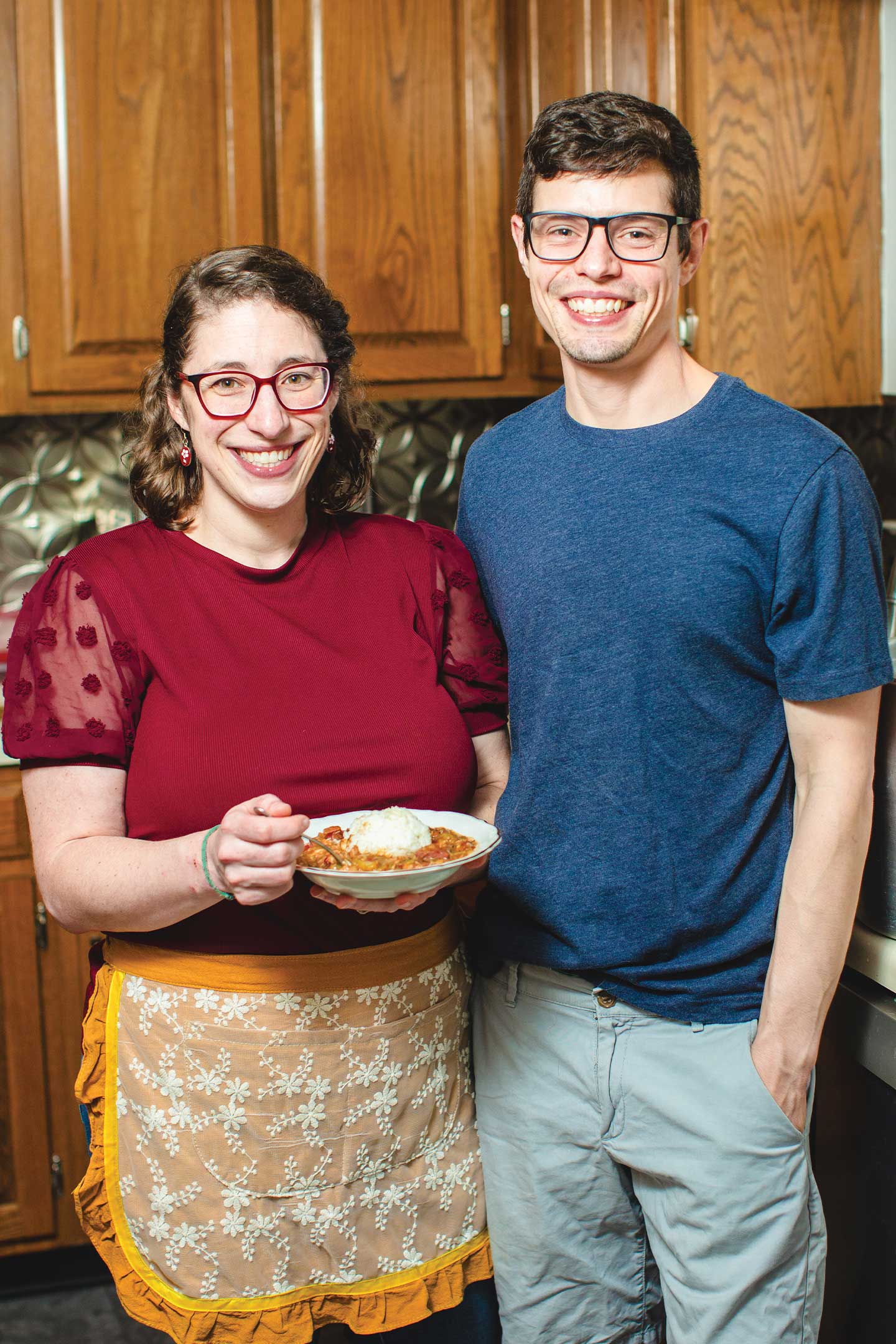
I learned to cook at an early age from my mom, who learned to cook from her grandmother - and one of the first things that she taught me to cook was tomato sauce, or red gravy. It’s fitting that one of the first family recipes that I learned to cook for my (now) husband was his mom’s Creole Chicken and Sausage Gumbo, as it’s gumbo with tomatoes! This gumbo recipe shows how much of a melting pot of different cultures New Orleans was (and still is) as it uses lots of herbs, okra, and tomatoes - drawing from both Creole and Italian influences. Everyone who tries this gumbo loves it and it is the perfect cure for that Louisiana homesickness!
– Kari Anderson
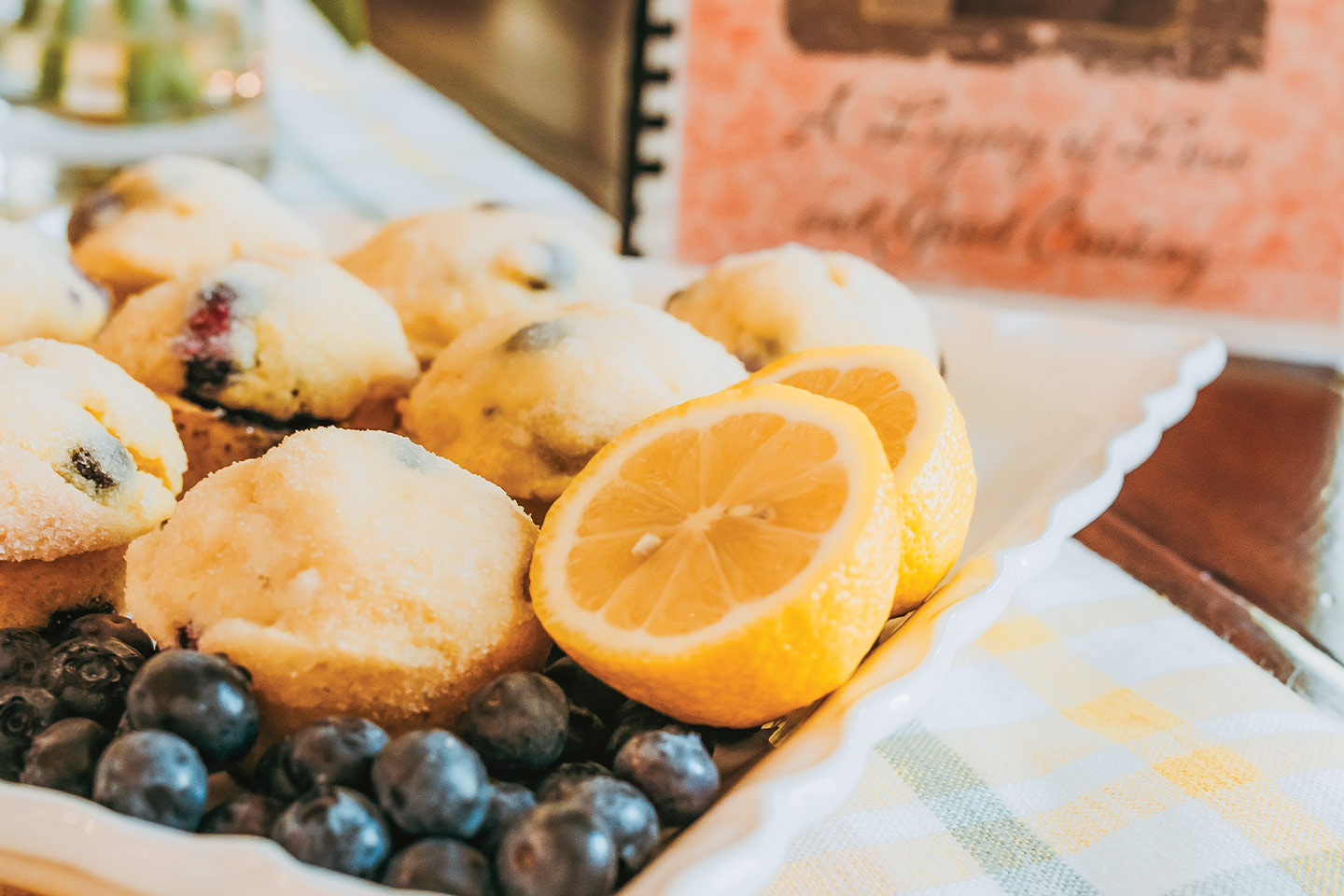
Grandma’s Famous Blueberry Lemon Muffins
Yields 12 muffins
Ingredients
For the muffins:
2 cups flour
½ cup sugar
2 tsp. baking powder
½ tsp. salt
2 eggs
¾ cup buttermilk (regular milk also works)
½ cup butter, softened
Zest of 1 lemon
1 cup fresh or frozen blueberries
For the sugar topping:
¼ cup butter, melted
½ Tbsp. lemon juice
½ cup sugar
Directions
Mix dry ingredients and set aside. Beat eggs, milk, and butter. Add dry ingredients and lemon zest. Stir gently to combine. Fold in blueberries. Bake at 375° for 20-25 minutes. For the topping, combine butter and lemon juice. While the muffins are still warm, dip the tops in this mixture, then dip in sugar.

I grew up eating these wonderful blueberry lemon muffins with buttery sugared tops every summer when our family visited my Grandma Ruth Rice. She had a large family, and everyone loved these special muffins so much that she would make huge batches to freeze so that we could all have homemade muffins every morning! I love that she lives on with this recipe that her children, grandchildren, and now great grandchildren make for their families!
– Melanie Christensen
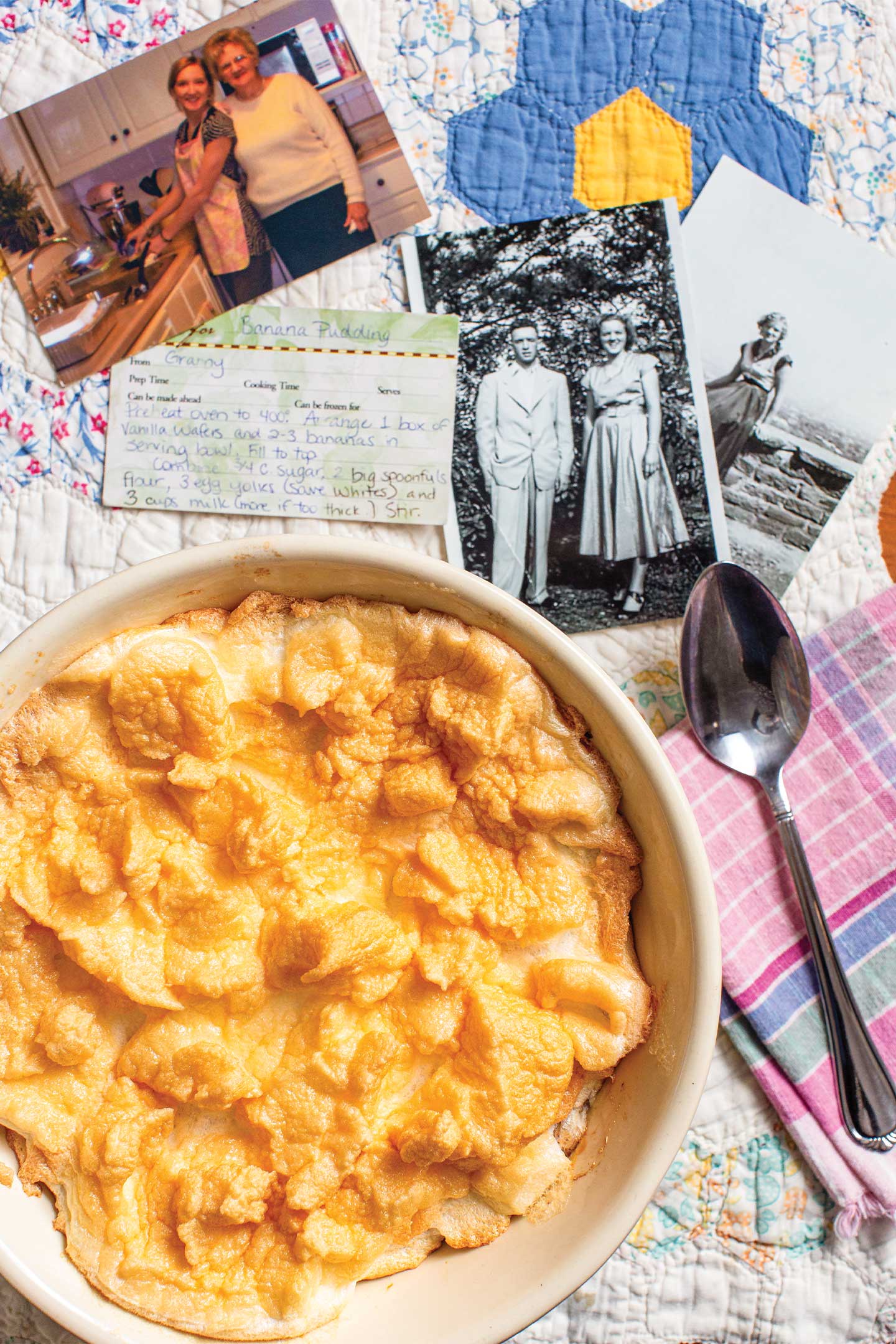
Granny’s Banana Pudding
Yields 8-10 servings
Ingredients
1 box vanilla wafers
2-3 very ripe bananas, sliced
¾ cup + 2 Tbsp. sugar
¼ cup flour
3 eggs (separate yolks and whites)
3 cups milk
½ tsp. + ¼ tsp. vanilla extract
Dash of cream of tartar
Directions
Preheat oven to 400°. Arrange vanilla wafers and sliced bananas in your prettiest serving bowl. Fill to the top. In a medium pot, combine ¾ cup sugar, flour, egg yolks, and milk. Cook mixture over medium heat. When mixture begins to simmer, stir constantly for 6-8 minutes, until thickened. Remove from heat and stir in ½ teaspoon vanilla extract. Pour pudding over cookies and bananas. For the meringue, beat egg whites and a dash of cream of tartar until glossy stiff peaks form. Slowly add in 2 tablespoons sugar and ¼ teaspoon vanilla extract. Spoon meringue over pudding. Make it pretty! Place in oven until meringue is lightly browned, about 5 minutes. Serve warm or cold – there is a huge debate in our family about which is better!

Granny grew up with 11 siblings, so she learned to cook from scratch for her family at only 9 years old. Her banana pudding has become a legend and has graced every family dinner we’ve had for decades. Granny is 91 now, and when I asked her to teach me how to make her famous banana pudding, she didn’t have an exact written recipe. It was a small scoop of this, a big scoop of that. I did my best to get an accurate amount of each ingredient and learned that the beauty of that kind of recipe is that you can’t really mess it up!
- Robin McDaniel

Linecké
Yields 20 servings
Ingredients
350g all-purpose flour
150g roasted almonds, blended
260g powdered sugar
2 eggs
250g unsalted butter
1 tsp. cinnamon
Small pinch of salt
1-2 bags vanilla sugar
Organic lemon zest, to taste
Jelly or jam of choice
Directions
In a large bowl, mix flour, almonds, and sugar, and then eggs. Cut butter into little pieces and add it to the bowl with the cinnamon, salt, vanilla sugar, and lemon zest. Mix everything together with your hands until you get a perfect, non-sticky dough. Wrap it in plastic wrap and put in the fridge overnight – for the best results, leave it in for 24 hours.
Once dough is chilled, spread into two pieces for easier manipulation. Take one piece and roll out the dough. The best way to do it is to put a little bit of flour on the counter, so the dough doesn’t stick. Now, use cookie cutters and create all different shapes! Traditional shapes for Czechs are hearts, circles, flowers, or stars. Make sure to always have an even amount of each shape, as you will be putting them together after they’re baked. Place cookies on a baking pan lined with baking paper. Preheat your oven to 365° and bake for 5-10 minutes.
After cookies are baked, let cool. Now it’s time for jelly! Spread jelly on the cookie and then put another one on top. Do this with all of them. Now enjoy your cookies!

I am from the Czech Republic and am very happy to share this recipe from my country. We make Linecké mostly on Christmas, but it’s great for every occasion. It actually comes from our neighboring country, Austria, where in the beginning it was a ‘Linecký cake,’ because the dough was used as a body for the cake. It is named after an Austrian city called Linz. My mom taught me how to make these cookies. I love them as much as everyone in my country and I believe you will as well.
– Kačí Ticha






